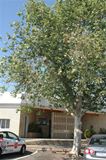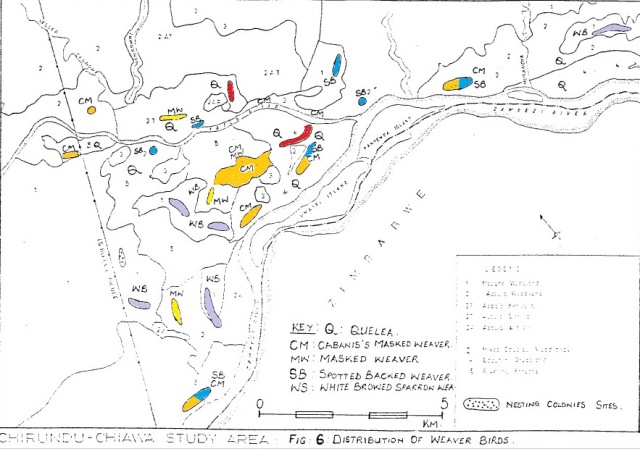Weaver news
| Katanekwa VK. 1992. Habitat selection by weaver birds in the Middle Zambezi Valley. MSc in Ecology, University of Zambia. Abstract. This study explores the pattern of interactions between seven species of weaver birds viz: the White Browed Sparrow Weaver (Plocepasser mahali), the Spotted Backed Weaver (Ploceus cucullatus), Cabanis's Masked Weaver (Ploceus intermedius), the Masked Weaver (Ploceus velutus) and three species of Quelea between Chirundu and the Chongwe River on the Zambian side of the Zambezi Valley. The seven species were studied in relation to their spatial distribution in the area, habitat factors and food habits. The aim was to find out what influences their selection of particular habitats. A sample of 76 nesting colonies of the different weavers were described. 14 habitat and nesting colony features were measured and were analysed using principle component analysis (PCA). Food habits were determined by field observations supplemented by stomach content analyses of 50 collected specimens. A significant difference in the size of the seeds utilized by different species was found. Changing patterns of exploitation of resources were observed and their implications on land-use discussed. 14 morphological characters of the birds were measured and analysed using numerical taxonomic methods. Bill and toe measurements were related to habitat and food preferences. Selection of the different habitats by weaver birds was considered to hinge on three complementary selection pressures, arising from habitat structure, food and presence of nesting sites. During the breeding season the distribution of the weavers is also influenced by the selection of predator free space and this factor may be more influencial. The weaver birds show different degrees of habitat isolation, varying from complete separation in Plocepasser mahali to differential niche overlap in the Ploceus and Quelea species. All the weaver hirds showed evidence of opportunistic feeding, overlaping in their use of seeds and other resources. The patterns of utilization of food resources depended on the abundance of food items at the time. Various adaptations such as flocking, habitat and dietary shifts, flexibility in habitat make it possible for the many similar species to occupy a limited and variable habitat without observable cases of direct competition.
The study was conducted mainly around Gwabi fishing lodge, along the Middle Zambezi Valley, on the Zambian side, from Nov 1988 - May 1989. Literature as featured in Weaver Watch news items |











